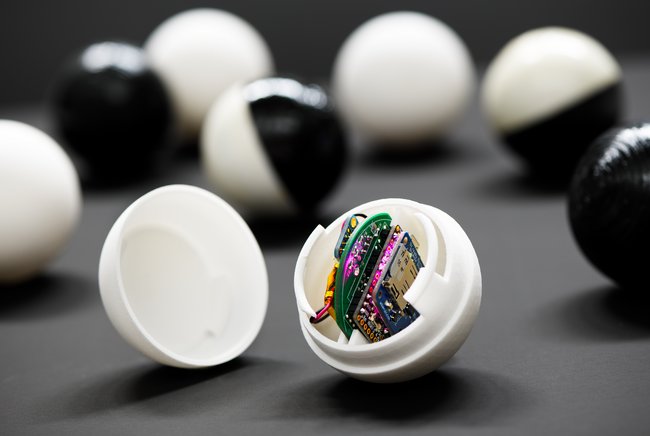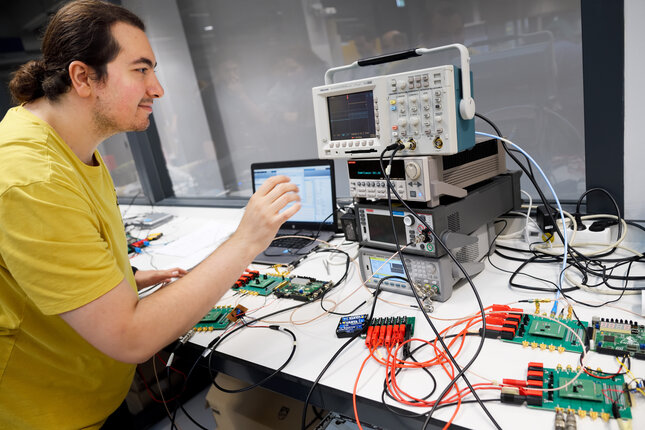Exploring unknown environments with ultrasound
Mapping distance and location without the use of GPS

Many underground liquid-filled environments are difficult to access for humans, think of deep underground oil wells or water distribution systems. Even with modern cutting-edge technologies, it is difficult to map these areas. The PHOENIX project developed a swarm of sensor nodes to explore these unknown environments. PhD candidate Gönenç Berkol worked on the ultrasound communication between these nodes, an ingenious way to map the distance and location without the use of GPS. Berkol will defend his thesis on February 24th at the department of Electrical Engineering.
The developed sensor nodes are small balls with little wires and small chips inside. They flow through pipes filled with liquid in order to detect obstructions and leaks, or to map a pipeline network. The balls are released manually into the liquid at the beginning of the pipeline system. They then float passively with the flow until they come out and are extracted so that the researchers can read out the data. The balls perform measurements for parameters of interest along the way, which they store internally.
To reconstruct a topological map of the environment explored by the sensor nodes, you need to localize the nodes during their movement inside the environment. GPS does not function in these liquid-filled underground environments. Berkol: “While floating inside, the nodes must work completely autonomous as there is no contact possible with the base station. Therefore, communication among the nodes and tracking their mutual distance is a crucial task. We took advantage of the liquid environment, by using ultrasound signals to communicate.”
Limited space
But distance measurements between the nodes is still, even with ultrasound, very complex. The balls operate in an enclosed volume of water, they experience collisions to the walls of the pipe and to each other and the pipeline system branches off every now and then. This all influences the echoes detected via ultrasound. In addition, achieving synchronization among these miniaturized - thus resource-limited - sensor nodes is very challenging.

To alleviate these problems, the PhD work of Gönenç Berkol focused on the system and hardware design of the swarm of nodes. For this purpose, he developed so-called Frequency-Division Duplexing (FDD) and Frequency Modulated Continuous Wave (FMCW)-based ultrasound rangefinder methods. Based on this approach, the nodes use two different ultrasound transceivers tuned for isolated frequency bands during their exploration. Berkol: “The nodes are therefore able to separate the echoes of other nodes from their own. These FDD-FMCW based rangefinder systems address the challenges related to collision and multipath phenomena without the need of a global synchronization among the elements of the swarm.”
Berkol designed, implemented, and experimentally characterized three chips. The first chip achieves a state-of-the-art sensitivity (-81.6dBm) and energy-per-bit (51.18nJ/b) for an ultrasound transceiver. The second chip comprises an ultra-low-power receiver, which operates only at a 23.6nW of total power consumption while achieving the best Figure-of-Merit (FoM) in the present state-of-the-art. The third chip builds an energy-efficient ultrasound transmitter (TX) that saves more than 30% energy on the large capacitance of the ultrasonic transducers. Combining the three chips, Berkol demonstrated experimentally that the different ultrasound rangefinder systems can work together.
Title of the thesis: Architecture and IC Implementation of Ultrasound Communication and Rangefinder Systems for Sensor Swarms. Promotors: Eugenio Cantatore and Pieter Harpe. The phoenix-project has now been completed, watch the video of the closing workshop, in which Berkol also presents his research (from 1:46:00).